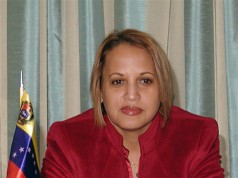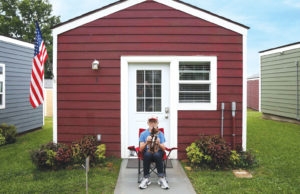— Marie Annette Agelus, her infant niece and 80-year-old grandfather
were among the first to get off the yellow school bus after it pulled
into this dusty port city.
Sixty miles away in
“There’s no food, there’s no water, and there’s no place to sleep,” Agelus said about quake-ravaged
Agelus and her family were among the exodus from this country’s overcrowded capital since the
earthquake crushed thousands of homes, killing an estimated 200,000 and
displacing 1.5 million people. Haitian officials say some 200,000
people have left the city since the quake struck. The wave of migration
to the provinces is only likely to grow in coming days as the Haitian
government begins to implement a plan to house tens of thousands in
camps.
The demographic change reverses a decades-long trend
in which “moun andeyo” — Haitians from the countryside — decamped in
the capital for a shot at finding work in a country where employment,
formal or otherwise, has long been elusive. And it was this mass
migration that prompted the province’s residents to christen the
capital the
The quake turned everything upside down. Government
officials now say that food must be distributed and jobs created in the
provinces to prevent many who fled from returning to the capital.
Though cities such as
In
but without the capital city’s red tape, residents say they welcome the
new arrivals, but many expressed caution, doubting that the hospitals
and schools could accommodate them.
“We don’t have the capacity. We don’t have the logistical capacity,” said Baunars Charles, the mayor of
Charles said his city of 60,000 had received 40,000 people since the quake.
Some residents say they worry about the new
residents, many of whom arrive with nothing. And some fear crime. In
interviews, many mentioned the penitentiary in downtown
Police officers concede they lack the manpower, weapons and equipment to handle any newcomers intent on committing crimes.
“The police just can’t handle the situation,” said Officer
Perhaps no place in
In the room with Julien, dozens of other patients
rested on stretchers and mattresses. Doctors and nurses zigged and
zagged to move from one patient to the other.
“Yesterday, we were overloaded — that’s a big word — very busy,” said
Atkinson said she saw crowds of people walking along the major roads on her drive into
Meanwhile, volunteers like Atkinson and the hospital
staff try to cope with the influx of new arrivals and a dearth of
doctors, medical supplies and medicine.
“It may not be a comfortable place, but we do the best we can,” Dr. Yveto Mayette said.
—
(c) 2010, The Miami Herald.
Visit
Distributed by McClatchy-Tribune Information Services.













